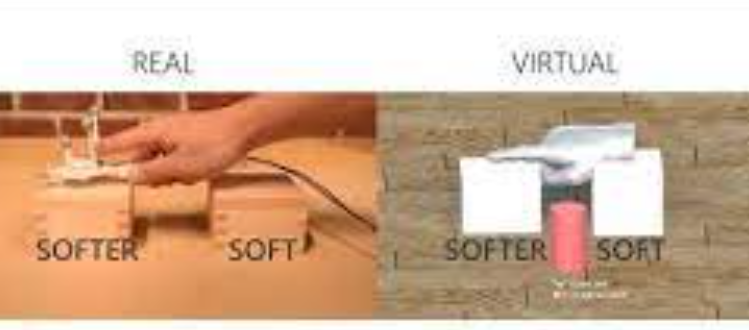Augmenting Perceived Softness of Haptic Proxy Objects through Transient Vibration and Visuo-Haptic Illusion in Virtual Reality
PubDate: June 2020
Teams: Stanford University
Writers: Inrak Choi; Evan Zhao; Eric J Gonzalez; Sean Follmer

Abstract
In this work, we investigate the effects of active transient vibration and visuo-haptic illusion to augment the perceived softness of haptic proxy objects. We introduce a system combining active transient vibration at the fingertip with visuo-haptic illusions. In our hand-held device, a voice coil actuator transmits active transient vibrations to the index fingertip, while a force sensor measures the force applied on passive proxy objects to create visuo-haptic illusions in virtual reality. We conducted three user studies to understand both the vibrotactile effect and its combined effect with visuo-haptic illusions. A preliminary study confirmed that active transient vibrations can intuitively alter the perceived softness of a proxy object. Our first study demonstrated that those same active transient vibrations can generate different perceptions of softness depending on the material of the proxy object used. In our second study, we evaluated the combination of active transient vibration and visuo-haptic illusion, and found that both significantly influence perceived softness, with with the visuo-haptic effect being dominant. Our third study further investigated the vibrotactile effect while controlling for the visuo-haptic illusion. The combination of these two methods allows users to effectively perceive various levels of softness when interacting with haptic proxy objects.

